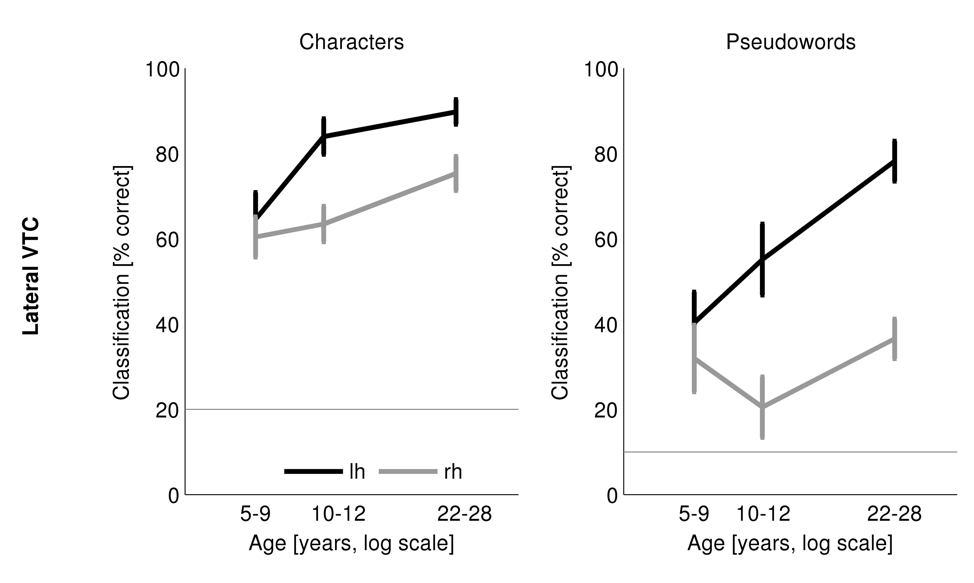Marisa Nordt
Postdoctoral Fellow
How does high-level visual cortex develop during reading acquisition?
Children require years of practice until they become skilled readers.
A central component of fluent reading is fast visual processing of letters and words.
How does learning to read affect ventral temporal cortex (VTC) - a cortical expanse that processes
high-level visual information such as shapes or objects, including written words?
In our recent study (Nordt et al., 2018) we used fMRI and a data-driven,
computational approach to quantify the development of distributed VTC responses to characters
(pseudowords and numbers) versus other domains in children, preteens, and adults.
Our results revealed anatomical- and hemisphere-specific development of word information in VTC.
From age five to adulthood, distributed responses to words and characters became more distinctive and
informative in lateral but not medial VTC, with a more pronounced development in the left compared
to the right hemisphere. Crucially, we found that the development of word information was
related to the development of reading ability. Overall, these findings have important
implications for theories on lateralization
and category-selectivity in VTC and for elucidating neural mechanisms of reading disabilities.

In future work we aim at further investigating how
VTC develops during reading acquisition by means of longitudinal assessments
and by combining fMRI with both quantitative magnetic resonance imaging (qMRI)
and behavioral data.
Read more about our study:Learning to Read Increases the Informativeness
of Distributed Ventral Temporal Responses
Marisa Nordt, Jesse Gomez, Vaidehi Natu, Brianna Jeska, and Kalanit Grill-Spector. Cerebral Cortex, 1 - 16. [Epub August 28, 2018].
|